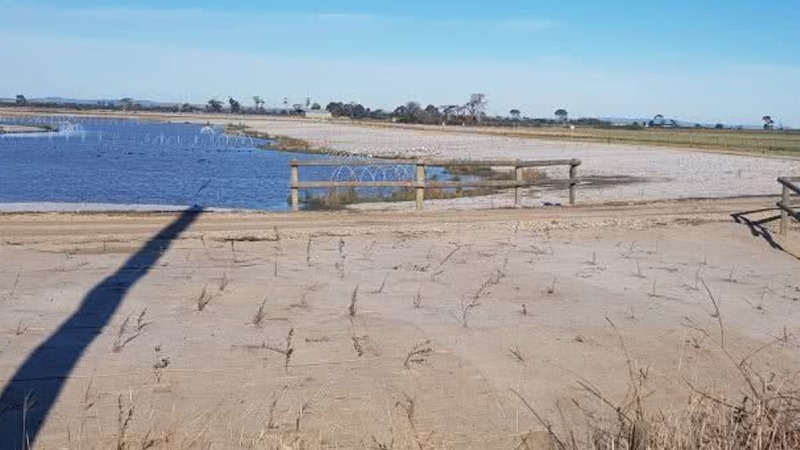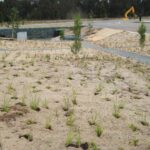Project: Koo Wee Rup (KWR) South Drain
Location: South-east of Melbourne
Product: TEC Mat Jute Heavy
South-east of Melbourne, spanning approximately 330 square kilometres, lies the Koo Wee Rup & Longwarry (KWRL) Flood Protection District. As well as supporting major agricultural activities, its unique habitat houses some of Victoria’s threatened and endangered species.
Urban expansion increased stormwater flows into the , significantly impacting the overall flood risk and continuing sustainability of the KWRL Flood Protection District.
The Challenges
Strategies for the area included re-vegetation of the KWR South Catchment drainage to prevent de-sedimentation and blockage of outlets to the Western Port Bay. Work undertaken also needed to minimise the impact on surrounding areas.
Our Solution
Erosion control matting (made from 100% organic material) combined with bio-engineering techniques were used to protect the soil surface against erosive forces and provide long-term bank stabilisation.
TEC Mat Jute Heavy was chosen as it is an ideal medium for seed germination. It protects the soil from erosion while allowing the seed to grow through the matting. The innate characteristic of “moulding” to the ground, allows TEC Mat Jute Heavyto reduce moisture loss from the soil, aiding the growth of desired plants.
First, the design called for the removal of existing native roots, weeds, lumps and stones. TEC Mat Jute Heavy erosion control matting (with slits) was then laid over the 100,000 sqm of prepared surface and anchored to the ground with staples to hold soil in place while vegetation establishes.
Steel pins are used to secure the jute mat. As these pins do not deteriorate with time, they may need to be removed if they look unsightly or pose a safety risk if left in situ. However, it is expected that the dense planting with soil binding roots will block access to the site and provide long-term erosion control as the jute breaks down over 6-24 months. Therefore, pin removal may not be necessary.
The palisades will also act as a long-term solution to limit sheet erosion and help to accumulate soils and growing medium on the slope.
Erosion control matting is typically laid by beginning at the top of the slope and rolling the matting down slope. However, matting can be orientated in different directions to achieve maximum erosion protection depending on site conditions such as direction of river flow and foreshore erosion. The number of joins in the matting should be minimised to increase the integrity of the matting and provide the strongest structure.
The Results
The technique encompassed erosion control, soil accretion, habitat creation and vegetation establishment.
Over 220,000 aquatics, ephemeral and terrestrial species of plantations were also planted to act as linkage corridors or ‘biolinks’ for wildlife to travel through and positively impact Victoria’s biodiversity.
As the jute breaks down, the dense planting blocks access to the site and provide long-term erosion control. The palisades also act as a long-term solution to limit sheet erosion and helps to accumulate soils and growing medium on the slope.


